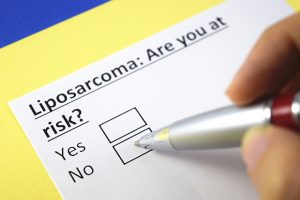
Myxoid liposarcoma – causes, side effects and treatments at NaturalPedia.com
Tuesday, May 22, 2018 by Michelle Simmons
http://www.naturalpedia.com/myxoid-liposarcoma-causes-side-effects-and-treatments-at-naturalpedia-com.html

Myxoid liposarcoma is a rare type of cancer that begins in fat cells. Although it usually occurs in the thigh, it may also develop in other areas such as the buttocks, chest, abdomen and the back of the abdomen. Some myxoid liposarcoma cells have a certain genetic change called a translocation, in which part of one chromosome switches places with part of another chromosome.
This type of cancer usually occurs in adults and is rare in children and adolescents. It is a type of soft tissue sarcoma. Myxoid liposarcoma is the second most common type of liposarcoma. Myxoid tumors may spread to the tissue that covers the lungs and heart.

Known side effects of myxoid liposarcoma
The side effects of myxoid liposarcoma vary, depending on the location of the tumors. These may include the following:
- Slow-growing and painless tumors
- If the tumor occurs on the thigh, a painless lump may be observed. Tumor thighs may also cause pain in the leg and restricted movements
- If it forms in the retroperitoneal space, the tumor may not cause any symptoms for a long period of time, until it grows to a huge size and compresses the adjacent organs in the abdomen. This is one of the reasons why retroperitoneal tumors are undetected during their early development stage.
Other side effects of myxoid liposarcoma may include swelling, decreased range of motion, numbness, fatigue, abdominal pain, weight loss, nausea, and vomiting.
Complications from myxoid liposarcomas may include the following:
- Large tumors in the retroperitoneal cavity can result in weight loss, abdominal pain, frequent urination, and kidney failure due to compression of the kidney
- Tumors in the leg may lead to the formation of varicose veins
- Metastasis of the tumor to other body regions, such as to the bone and soft tissues
- Damage to the muscles, vital nerves, and blood vessels during surgery to remove myxoid liposarcoma
- The condition tends to recur after treatment, especially when surgical removal of the tumor is incomplete
Body systems harmed by myxoid liposarcoma
The body systems harmed by myxoid liposarcoma include the endocrine system and the lower body in general.
List of foods or nutrients that prevent myxoid liposarcoma
There is no information on what foods or nutrients directly prevent myxoid sarcoma. However, there are foods and nutrients that can help protect you from cancer. These include vitamin D, curcumin, B vitamins, green tea, selenium from Brazil nuts, seafood, whole grains, cereal, meat and poultry, kidney, and liver, garlic, and fish oil.
Treatments, management plans for myxoid liposarcoma
Treatments for soft tissue sarcoma such as myxoid liposarcoma include surgery, radiation, and chemotherapy.
Where to learn more
- Chinese herbs kill cancer cells: study
- 6 Cancer-Fighting Culinary Herbs and Spices That You Should Know
- 20 Herbs that Fight Cancer
- Breadfruit Leaf Extract Kills 100% of Pancreatic Cancer Cells
- CLA in grass-fed beef is a powerful anti-carcinogen that also promotes fat loss
Summary
Myxoid liposarcoma is a rare type of cancer that begins in fat cells.
Myxoid liposarcoma causes tumors, lumps, leg pain, restriction in movements, swelling, a decreased range of motion, numbness, fatigue, abdominal pain, weight loss, nausea, and vomiting.
Myxoid liposarcoma can lead to other complications, such as varicose veins, damage to the muscles, vital nerves, and blood vessels, and frequent urination, and kidney failure due to compression of the kidney.
Myxoid liposarcoma can be treated with surgery, radiation, and chemotherapy.
Sources include:
Tagged Under: Tags: Myxoid liposarcoma





